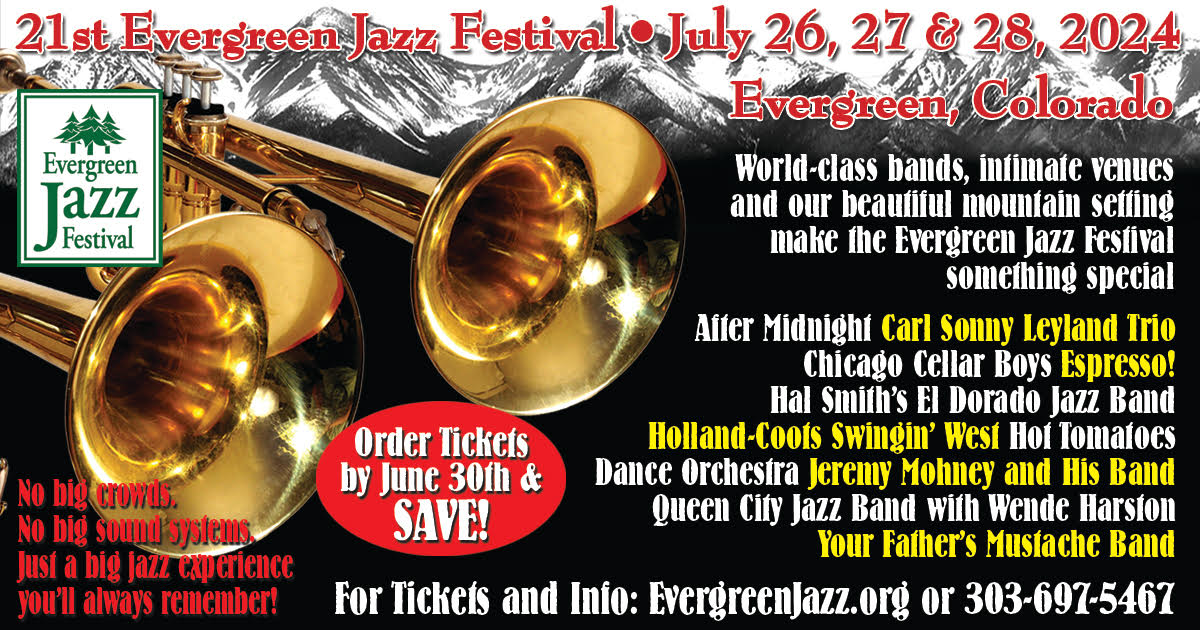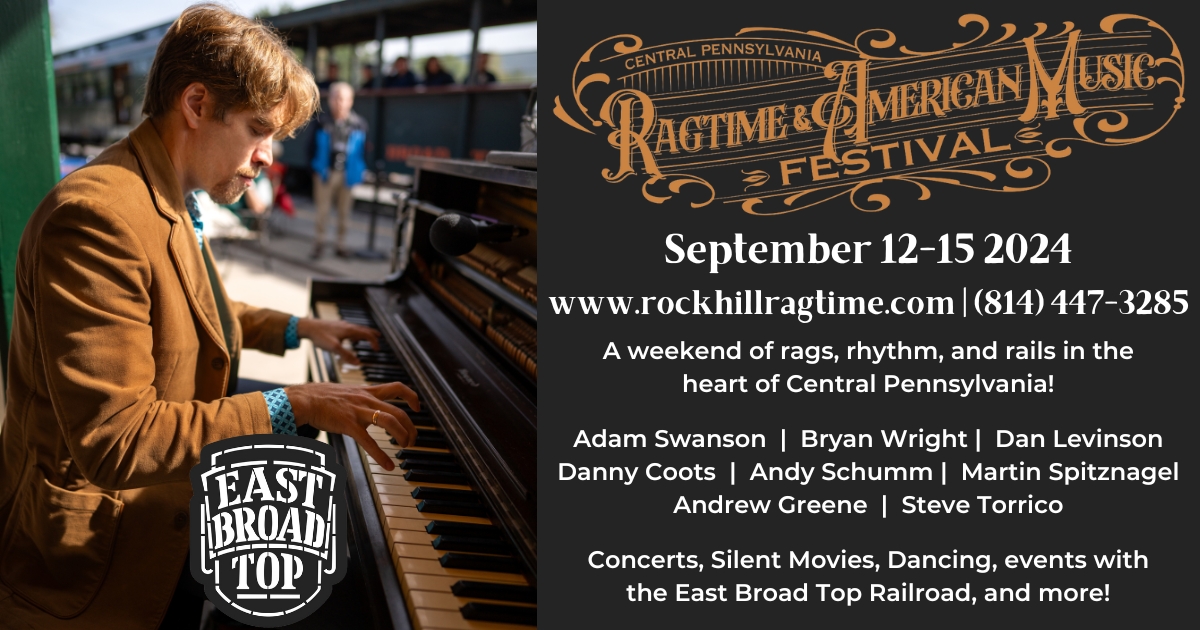JB: Welcome back, intrepid explorers! To start the New year off with a bang, we’re continuing our discussion of the incomparable Kid Ory Band’s appearances on Orson Welles’ weekly radio show in 1944. In our previous installment, we wrapped up with the band’s spirited rendition of “Sugar Foot Stomp,” marred only by some rather uninspired clarinet playing. I believe that shortcoming will be adjusted in our first tune. Hal, over to you!
HS: The following weekend (May 3, 1944), the all-star group played another Ory composition: “Savoy Blues.” On a number of previous occasions, Ory counted off “Savoy” at a fairly brisk tempo. In this case, it works to the band’s advantage. The usual routine is trimmed down due to time constraints, but we are still treated to a lovely guitar solo by Bud Scott, with Morton-like figures played by Buster Wilson in the background. The discography I have lists Wade Whaley on clarinet, but Orson Welles announces Barney Bigard as the reedman. And there can be no mistaking that rich, beautiful Bigard tone! Ory sounds terrific on the signature trombone solo and throughout the last chorus. The trombone tag is missing, but Ory ends the piece with a phrase that was also a favorite of Turk Murphy’s. This band just gets better and better from week to week! What stands out for you on this side, Jeff?
JB: I hope Orson Welles was as excited about the arrival of Barney Bigard as I was upon first hearing “Savoy Blues:” the entire band is better off for his inclusion. The band sure packs a lot of material into just over two minutes! It’s off to a rocky start with Bigard the only horn playing the first bar of the 8-bar section leading us to the famous 12-bar riff chorus, but from there on it’s hitting on all cylinders; I love pianist Wilson’s backing behind the horns. Morton would’ve approved! Nice surprise to give the first solo to guitarist Bud Scott. Once Bigard takes over—the brass riffing behind him—we’re in for a thrilling ride! Mutt Carey channels “Riverside Blues” during his one-chorus “feature” (I’m still having trouble with the word “solo” for these sides as the ensemble sound only abates during Scott’s guitar solo) then Ory plays his celebrated chorus that ends with perhaps the most famous glissando in jazz history! The band stomps out the final two choruses, with Carey eschewing the traditional melody for the final chorus to simply blow hot open horn! The roar of approval indicates this performance really resonated with the audience!
Hal, the band presents “Weary Blues” on the May 17, 1944, installment of the Welles show and it’s stellar! The second time through the A section features a WILD break by Barney Bigard. The rhythm section romps throughout. This is obviously very comfortable material for this outfit; they’d all been playing this tune composed by Artie Matthews (and published by ragtime champion John Stark in 1915) for decades. Once the band reaches the trio, Ed Garland’s slap bass stands out. I also love Zutty Singleton’s cow bell hits taking the band into the final ensemble chorus. It sounded like Bigard was ready for one more at the end: I know I was! What do you hear on this side, Hal?
HS: There’s no warmup at all on this track! The band is in fourth gear right from the start and the intensity never lets up! Have you heard Omer Simeon’s “primal scream” on his trio recording of “Beau Koo Jack?” Bigard’s break on “Weary Blues” is in that same class. The energy just keeps building and building all the way through the song. The way the front line works together on this track is a textbook example of ensemble playing. And the rhythm section—!!! I hear Ed Garland double-slapping, Bud Scott keeping perfect time, Buster playing some beautiful band piano, and Zutty in top form. Hear those bass drum accents! The four taps on the cowbell, signaling the band to take it out, was one of his trademarks. (Mr. Krupa borrowed that same lick at the end of the long drum solo on “Sing, Sing, Sing.”) It does sound like the band could have gone for one more chorus. I wish they had! This has to be one of the very best performances on all the Orson Welles broadcasts.
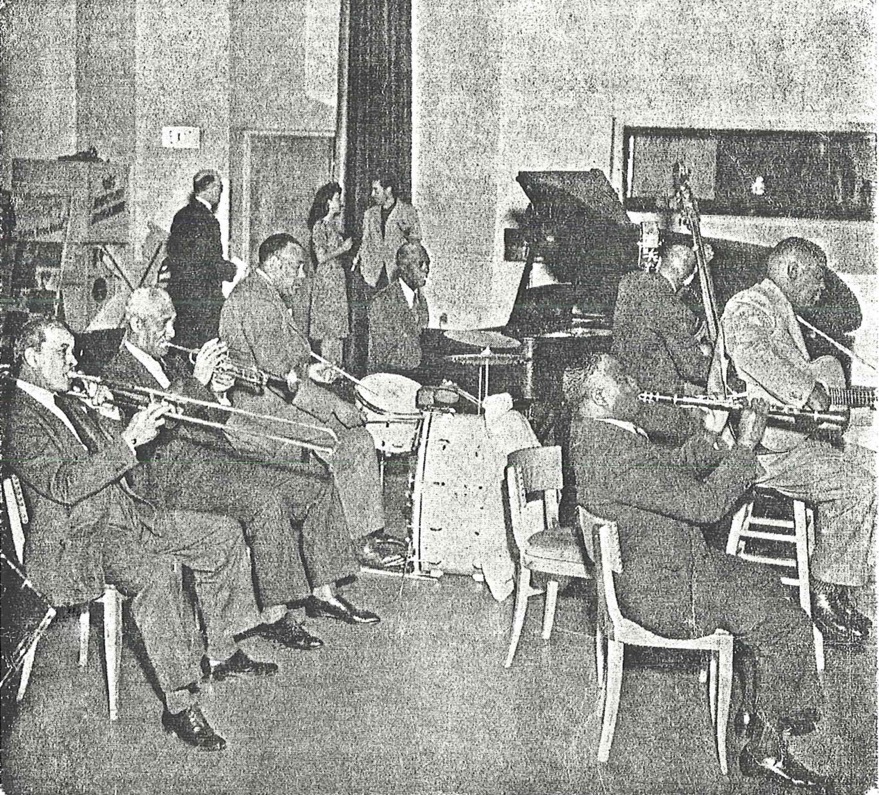
Singleton – Orson Welles broadcast (no date available)
In between radio broadcasts with Welles
The next day, on May 18, the Ory band recorded four sides as part of the Standard Oil School broadcasts. The first performance was another version of “Oh, Didn’t He Ramble?”—very fast and very short! After the 6/8 section and Zutty’s jazzy roll-off, there are only two ensemble choruses. Talk about leaving the audience wanting more—! The first of two Blues is another variation on “Tin Roof Blues” (and “Blues For Jimmie”). Again, this is very short; under two minutes. But—just listen to Papa Mutt’s mute work on that second chorus! Wade Whaley sounds much better in the lower register and Ory plays his usual great tailgate lines. I hear Buster Wilson playing some beautiful Jelly Roll phrases while Bud Scott, Ed Garland, and Zutty just keep the 4/4 momentum going. “Muskrat Ramble” is slightly longer, so the ensemble is able to relax a little. There is an extra “B” section for Ory to play his patented chorus. Mutt really growls on this one and Zutty is very active in the background—including those four taps on the cowbell to signal the last chorus. Note the trombone tag is a classic New Orleans phrase, rather than the original melody that Ory generally used.
“Blues Habanera” is the longest performance of the Standard Oil broadcast: Over four minutes! It begins as yet another variation on “Tin Roof”/“Blues For Jimmie.” On the second chorus, Mutt quotes Manuel Manetta’s “Old New Orleans Blues” and plays a little bit of double-time. The third chorus is a solo for Wade Whaley, with a busy “Spanish Tinge” underneath. Next, Ory and Whaley play two duets, with the rhythm section playing a variety of rhythms in accompaniment. Mutt Carey returns with some fantastic mute work over the ensemble, before Zutty brings the band into double-time. Some of the musicians had different ideas regarding the length of the phrases and there are some nail-biting moments before Mutt brings the band back to a blues tempo. Despite the indecision on the double-time section, this is a very nice blues performance and we get to hear even more of Buster Wilson’s interpretation of Morton. What do you hear on this session, Jeff?
JB: The four sides might have been so short as they would’ve been included as part of a parade of different musical styles being presented during the 25-minute broadcast. Each episode started and ended by stating it was “radio’s oldest network musical and educational program presented as a public service by the Standard Oil Co. of CA…broadcast in the ten western states and on the east coast.” It started in 1928 and was still going strong in the late 1950s! The program would present every style of music imaginable in short segments using a mixture of live and recorded music. The fact that the show devoted over a third of their air-time to Ory’s band speaks volumes about the high musicianship as well as its growing fame as a result of the Welles connection.
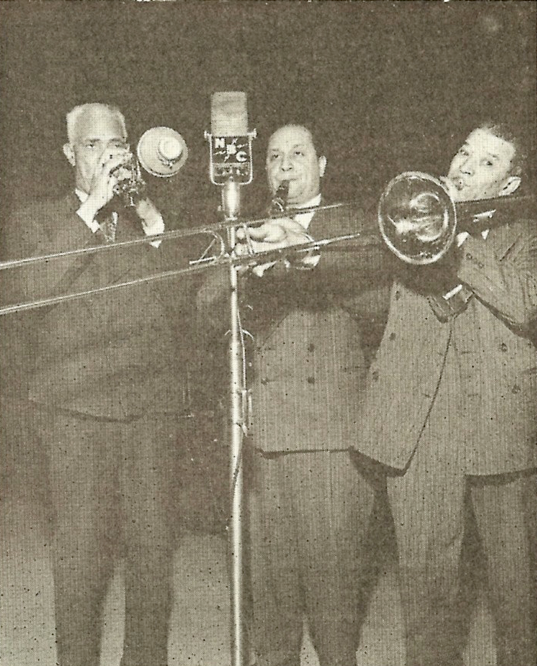
At any rate, if I tune out Wade Whaley I can enjoy “Oh, Didn’t He Ramble,” although I wish there had been more than 1:09! Whaley is sadly bereft of jazz feeling throughout, but the band acquits themselves wonderfully at this tempo! And Whaley is more at home with the blues, so the next side, simply called “Blues,” stands out, especially as you pointed out, for Carey’s scorching mute work on the final ensemble, but for the effortless groove as well. Given that only a little over two minutes was devoted to “Muskrat Ramble” they take it at a refreshingly medium-tempo. The form is AA-BBB-A (with the trombone growl ala Tiger Rag) and a final A leading into Ory’s surprise tag, lifted from his own “Savoy Blues” to replace the expected one. Aweome!
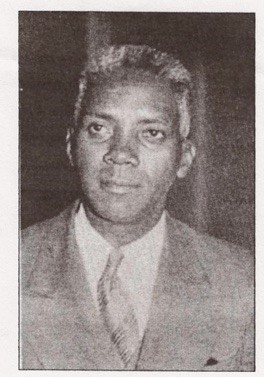
When I listened to “Blues Habanera” the first time, I was scratching my head regarding the title until the band arrives at the third chorus and the “Spanish tinge” appears behind Whaley…but then the rhythm returns to a swinging feel…however, there are all sorts of great rhythmic percolations occurring under the first duet chorus between Ory and Whaley; Zutty continues the “spanish tinge” backing he offered during Whaley’s chorus and Buster Wilson is superb throughout: he barrelhouses his way through the first two ensembles and behind Ory and Whaley’s duet! I also enjoyed Wilson’s reharmonization of the blues harmonies behind Ory’s second chorus with Whaley which he uses again during Mutt’s featured muted chorus. Zutty does a clear press-roll into the double tempo choruses and…it just falls apart. Whaley thinks that the band is now playing a 24-bar blues so is late following the harmonic changes in his playing. Mutt Carey resorts to playing shaking notes at the start of the second and final choruses and the band kind of fluffs out. This seems to indicate to me that this was a live performance rather than a “recorded for future use” one, as the musicians would probably have insisted on a re-do. Still there are some nice moments, to be sure. Hal, what happened next?
A return to Orson
HS: They returned to the Welles program the next week with a guest on the program: vocalist Helen Andrews, who Welles introduces as “the original Miss Five-by-Five.” After a brief introduction by the ensemble, the remainder of the performance is given over to Miss Andrews and several choruses of stock blues lyrics. But just listen to that accompaniment! Carey playing sparse lines; Ory’s smears indicating the chord changes; Bigard’s dizzying arpeggios; Buster’s Morton-like phrasing… I think the backup is a lot more interesting than the featured vocalist! The audience reaction is loud and enthusiastic; hopefully some of that applause and cheering was for the instrumentalists! By the way, backing up singers was nothing new for the Ory band; four of the sides made at their very first recording session in 1922 were accompaniments to Roberta Dudley’s and Ruth Lee’s vocals!
On May 31, the band played “Tiger Rag” on the Welles program. As with “Weary Blues,” the band tears into “Old Tige” enthusiastically from the first note. Ory’s glissandos on the first three strains are wonderful. Barney Bigard plays the 1917-era breaks on the second strain, bringing a bit of levity to the proceedings. There is a lot to like on the first time through the trio—especially Zutty’s woodblocks and Papa Mutt’s quotation of “Making Runs”—the same song that Bunk Johnson whistled to illustrate Buddy Bolden’s cornet style. The band indulges in some more good humor when Bigard plays a goofy break, Ory contributes some over-the-top glisses and Mutt imitates a horse whinny. But there is also some fantastic hot rhythm; particularly Ed Garland’s driving bass break and Zutty’s great afterbeats on the final chorus. What do you hear on these sides, Jeff?
JB: I have to agree that as capable a singer as Ms. Andrews is, it’s the expert musicianship behind her that one remembers! The live audience is rapt however! You can hear them calling and shouting during the first vocal chorus and her line in the penultimate chorus about “takin’ you skinny women’s men” draws a big laugh. In fact, the response was so effusive one wonders why this was the only time a vocalist was included…either Welles or Ory must have thought it best to go back to the format that had been established during the previous two months.
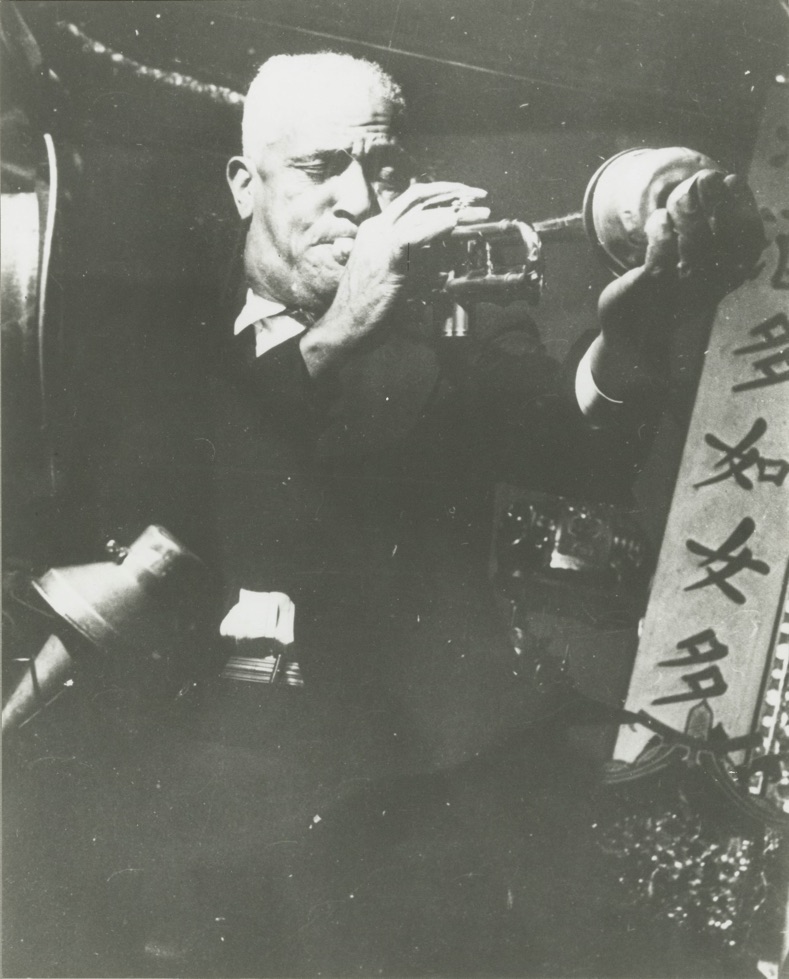
Welles introduces “Tiger Rag” as being played by “Our Mercury All-Star Jazz Combination…for your delectation and ‘kicks,’” but we know from the first bars who it is! I’m intrigued by the melody Papa Mutt Carey is playing on the A strain; it’s off-center somehow but it works! He’s consistent with it so he’s not flubbing this…I’ve just never heard the melody to the first section played in such an eccentric way. Buster Wilson does a left-hand walk down to what he thought would be the section in Eb, forgetting the extended length of the A strain. He immediately recovers and the band runs through the second section with aplomb. Bigard’s third break on this section seems his saying “Yeah, I can do the original Larry Shields breaks, but now this is ME!” The trio choruses rocked me back on my heels! Sure, the band is putting some humor into their rendition, but without descending into parody: they’re presenting “Tiger Rag” as the venerable hot jazz tune it is!!
As Welles describes the New Orleans funeral tradition during his intro to their appearance on the June 28, 1944 show, the band wails the mournful dirge leading us into “Oh, Didn’t He Ramble.” While the tempo is much faster than you’d expect in any post-burial parade (I’m picturing people running down the street), the band handles this fast speed with expert navigation, keeping the heat up without letting it boil over. I was particularly excited by Buster Wilson’s piano fills! Hal, not counting Zutty’s roll-off into the tune, the band runs through the 16-bar form five times in 1:28. Did they always perform the piece at this tempo? Regardless, I know that you have some great things to say about Kid Ory’s contribution here; he seemed able to throw in all of his trademark styles without ever breaking a sweat! Can you take us through this, Hal?
HS: I should mention that Helen Andrews reappeared in the Ory discography, singing “Farewell to Storyville” with the band on their 1946 session for Columbia Records. As for “Didn’t He Ramble” … that is fast! On most of the Ory recordings this song is played at a bright tempo—but not nearly as rapid as this one. And they didn’t even get to include the “patter” section (“His head was in the market, his feet was in the street…”). You know, other New Orleans bands played this number at a sprightly tempo: Jelly Roll Morton’s New Orleans Jazzmen, Bunk Johnson with Sidney Bechet and George Lewis’ band too. (Although Bunk’s Brass Band played the entire song in 6/8). By contrast, the Lu Watters, Turk Murphy, and Bob Scobey bands all played “Didn’t He Ramble” at much bouncier tempos. Regarding Ory: he slides, smears and shouts for all he’s worth on this much-too-short performance. Ory worked out a lot of his phrases early in his career and continued to use them until he stopped playing. Even if some of them are slightly off-kilter with regard to the melody, harmony or chord structure—he could do no wrong as far as I’m concerned! When Louis Armstrong sang about “the greatest slideman ever born” I am in 100 percent agreement!
JB: You and me both, brother! He was such an important figure throughout his career, from the earliest days in New Orleans—hiring virtually every notable name in town to play in his band at some point, including Mr. Armstrong—to his migration west to CA—where he led the band that recorded the first sides by a Black New Orleans jazz band in 1922—to his immeasurable contributions on SO many recordings in Chicago in 1925-26, to his “rediscovery” in 1944 to his continued success throughout the remainder of his life. Edward “Kid” Ory would never have to take a back seat to anyone! Hal, can you lead us through the band’s final appearance on Welles’ show?
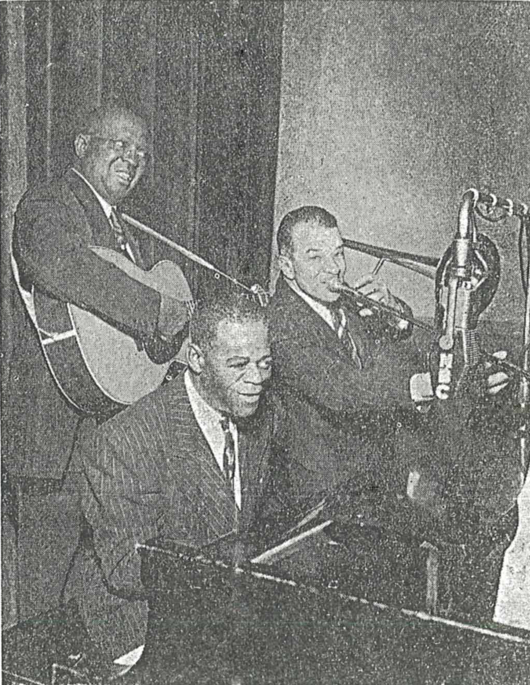
HS: The Ory band’s final appearance on the Orson Welles Mercury broadcasts came on July 12, 1944. I can’t find a spoken introduction to this one, which might have explained why Papa Mutt and Buster Wilson did not play on this broadcast. Whatever the reason was for their non-appearance, their absence was definitely felt on “Royal Garden Blues”! Substitute trumpet man Norm Bowden sounds like he may not have been too familiar with the melody, at least until he plays a blues chorus later in the song. Pianist Fred Washington stays pretty much in the background. Ory, Bigard and Zutty are the driving forces here. Ory in particular plays a lot busier, without the strong lead provided by Papa Mutt. Zutty plays more fills. It’s a good performance, but certainly not in the same league as “Tiger Rag” or “Weary Blues!”
For whatever reason, the Ory band was off the program after July 12. They were replaced by Zutty Singleton’s Swing Band and I have not been able to find any recordings of that particular group. Jeff, did you hear anything on “Royal Garden” that I didn’t mention?
JB: You covered it nicely, Hal, but I took special notice of Ory’s laying out during the 2nd section’s traditional two-bar trombone break that usually follows the one-bar ones by trumpet and clarinet, throwing it to Zutty. Highlights for me include Bigard’s lovely two-chorus solo—the second utilizing some classic New Orleans figures—and Ory’s strong single one (wish he’d taken two; then we could’ve skipped trumpeter Norm Bowden). Bowden sure didn’t know this tune; he even tried to turn the four-bar transition to the trio into a repeat of the first strain. While his two chorus solo (with as you say heavy backing from the horns and drum) swings, it doesn’t build in the classic New Orleans tradition, exemplified so effortlessly throughout the previous broadcasts by Papa Mutt Carey! Despite Zutty swinging mightily behind him, urging him to take the band out on a climactic ride, after a high “Bb” note, Bowden returns to simply blowing the melody, unadorned and in the middle register, for the final chorus. By any other band’s standards, this side would garner pretty high marks, but having heard the riches preceding it over these past two months, I’m sorry it represented the last time this band would appear on Orson Welles’ show.
Speaking of a band that set its own standards, Hal, you’ve suggested one that was inspired by many while sounding like none except itself. Please give our readers a glimpse of what’s on tap next month!
HS: I am delighted to do that, Jeff! Next month we will talk about an iconic Southern California traditional jazz band, which is also one of my all-time favorites: The El Dorado Jazz Band! And, coincidentally, one of El Dorado’s key band members had a direct connection with one of Kid Ory’s musicians. Details to come!






